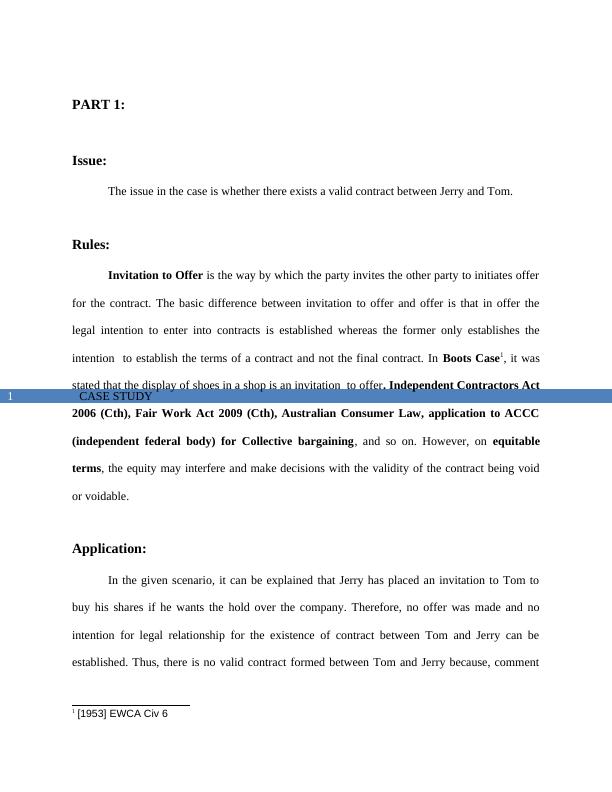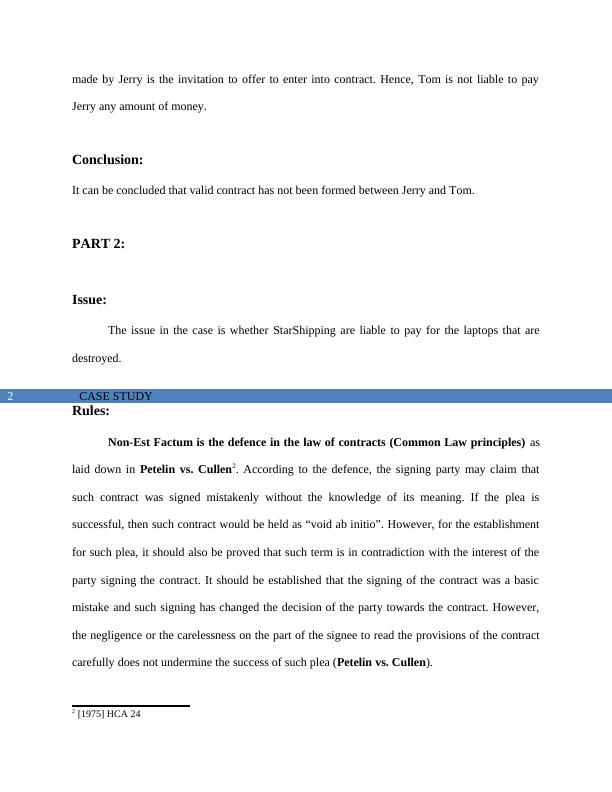Jerry and Tom Case Study 2022
Mid-Semester Assessment for the course Foundations of Company and Commercial Law, worth 20% of the final grade, with a word limit of 1,200 words.
7 Pages1432 Words15 Views
Added on 2022-10-15
Jerry and Tom Case Study 2022
Mid-Semester Assessment for the course Foundations of Company and Commercial Law, worth 20% of the final grade, with a word limit of 1,200 words.
Added on 2022-10-15
ShareRelated Documents
End of preview
Want to access all the pages? Upload your documents or become a member.
Case Study Issues 2022
|6
|1279
|39
Case Study Analysis
|8
|1837
|322
LAWS20061 Assignment - Assignment Management Law
|7
|1326
|89
Assignment on Commercial Law (Solved)
|6
|1588
|58
Legal Advice for Contractual Mistakes
|5
|1300
|54
Corporation Law
|8
|1797
|66



